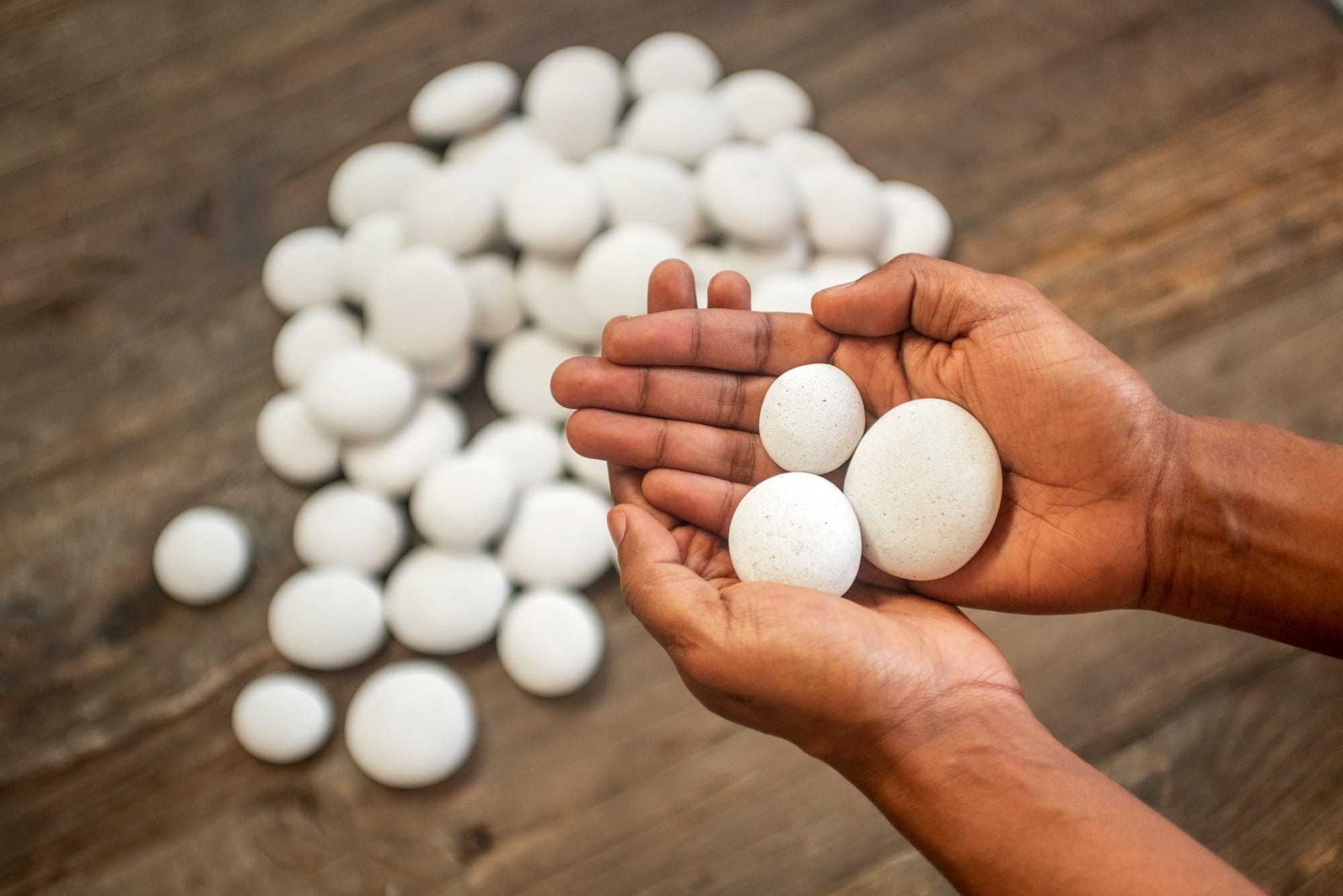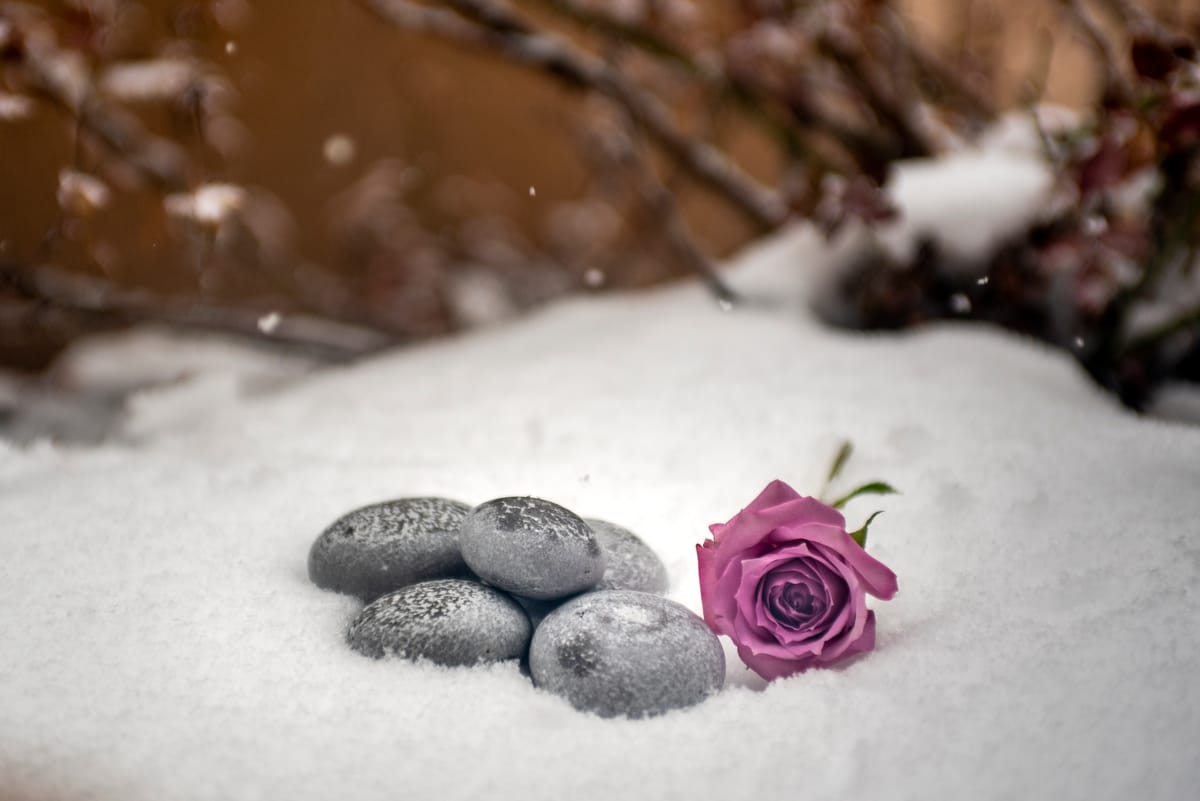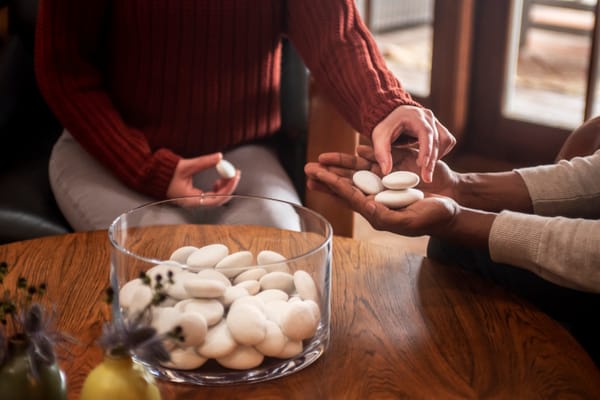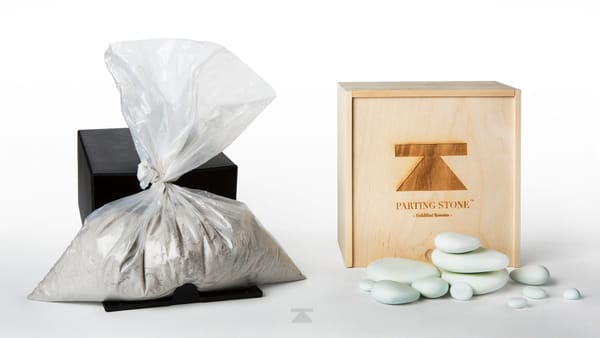Holiday Memorial Integration: Celebrating with Love
Holiday memorial integration guide for celebrating with love. Include deceased loved ones in holiday traditions with meaningful memorial touches.

The kitchen smells like cinnamon and brown sugar, just like it always has on Christmas morning. Your daughter is laughing at something your son said while unwrapping presents. The coffee is perfect. Everything feels almost normal, almost joyful, until you catch yourself looking toward the empty chair where your mother always sat. In that moment, two truths exist simultaneously: the holidays can still hold magic, and someone you love isn't here to see it.
This is the paradox of holiday grief. You're not choosing between honoring your loved one and celebrating with your living family. You're learning to hold both, to let absence and presence share the same table. The question isn't whether you should include your loved one in holiday celebrations. The question is how.
Key Takeaways
- Holiday grief intensifies not because you're doing something wrong, but because celebrations naturally highlight absence alongside presence
- Integration, not replacement, allows you to honor your loved one while maintaining space for joy during family celebrations
- Creating new traditions that include memorial elements gives grief a meaningful place at the table without overwhelming the gathering
- Physical memorial objects can serve as gentle anchors during holiday moments, allowing family members to feel connected across generations
- The first holiday after loss is often harder in anticipation than in reality, and there's no single "right way" to navigate it
Reflections on love, loss, and the ways we carry them.
The holidays often carry a bittersweet weight for those who grieve. They remind us not only of love, but also of absence. The empty chair, the missing laughter, the recipes that don’t quite taste the same without the person who taught them. Yet, as I often remind my clients, memory and celebration can coexist beautifully when we create intentional spaces for both.
One client, Liza, lost her father two years ago. Their family used to gather around his old wooden dining table every Christmas Eve. That first year without him, the silence was unbearable. Together, we reimagined the ritual : they set his photo at the table, played his favorite Nat King Cole record, and took turns sharing stories that made them laugh. Later, each family member held one of his Parting Stones, passing it around as they spoke. “It felt like he was with us again,” Liza said. “Not in the same way, but in a real way.”
Psychologists call this “continuing bonds." The idea that healing doesn’t mean letting go, but learning how to carry love differently. Tangible memorials, like candles, heirlooms, or stones, invite connection without overshadowing celebration.
If you’re approaching the holidays with a tender heart, remember: you don’t have to choose between joy and grief. You can set a place for both. Light the candle. Share the story. Let love take its seat at the table. Because love, in all its forms, deserves to be remembered.
Cathy Sanchez Babao
Parting Stone Grief Coach
How Do You Include Deceased Loved Ones in Holiday Celebrations?
Including deceased loved ones in holiday celebrations means creating intentional spaces where memory and celebration can coexist naturally. This involves adapting existing traditions to acknowledge their absence, introducing new rituals that honor their memory, and incorporating tangible memorial elements that family members can interact with throughout the gathering.
The most meaningful integration approaches include:
- Setting a place at the table with a symbolic element (candle, photo, or memorial object)
- Continuing specific traditions they loved while acknowledging who taught you these practices
- Creating memory-sharing moments during the gathering where stories can flow naturally
- Incorporating their favorite foods, music, or decorative elements into the celebration
- Using tangible memorial items that family members can hold, display, or interact with
- Establishing new traditions specifically designed to honor their memory while building connection
- Allowing flexibility for family members to participate at their own comfort level
These approaches work because they give grief a place without letting it dominate the celebration. Research in bereavement studies demonstrates that meaningful rituals help individuals process grief while maintaining social connections during significant dates (O'Connor et al., 2021). The key is choosing integration methods that feel authentic to your family rather than performative or obligatory.

Understanding Why Holidays Intensify Grief
Grief doesn't follow a predictable timeline, and the holidays have a particular way of disrupting whatever equilibrium you've managed to build throughout the year. Psychologists identify this phenomenon as the "anniversary effect," where emotionally significant dates trigger heightened grief responses even in individuals who have adapted well to their loss in daily life (Stroebe & Schut, 1999).
The holiday intensification happens for several interconnected reasons. Traditions carry profound emotional memory. When you bake your grandmother's cookie recipe or hang ornaments she gave you, your hands remember movements you've made for decades. These rituals were never just about the actions themselves; they were about connection, about doing something together year after year. When that person isn't there to share the ritual, the absence becomes tangible in a way that ordinary days don't require you to confront.
Social expectations compound the difficulty. The world around you hums with celebration while you're carrying grief. Holiday music plays in every store, advertisements show perfect families gathered around tables, and people ask cheerfully about your plans. There's an unspoken cultural pressure to be joyful during holidays, which can make grief feel isolating or even inappropriate. Many families describe feeling caught between honoring their sadness and protecting others from their pain (Weiss, 2022).
The holidays also highlight changed family dynamics in unavoidable ways. Someone who used to orchestrate the entire celebration is gone, and suddenly you're questioning who will host, who will carve the turkey, whose blessing you'll use before dinner. These aren't just logistical questions. They're confrontations with permanence. The empty chair at Thanksgiving dinner isn't subtle. The missing voice in the Christmas carol sing-along echoes.
AmberElizabeth from Santa Fe, New Mexico 🖤, who lost both parents, describes navigating her first holidays without them: "Loss is a wave we will always ride in their absence and our grief is how we ride it. Our parents didn't leave any instructions for their ashes; they told my brother and I they trusted us. With this trust, we took part of their ashes to their sacred places and had stones made that we both place in our sacred places. This is incredible: to be able to honor the power and magic of place, love, connection for both those who flew and for those of us who remain behind."
Understanding that holiday grief is normal, expected, and shared by countless others doesn't make it hurt less. But it can make it feel less lonely. You're not failing at grief because the holidays are hard. The holidays are hard because love doesn't end when someone dies, and celebrations were designed to be shared with the people we love most.

A New Way to Hold Close What Matters Most
We transform cremated remains into beautiful, touchable stones that bring comfort when you need it. Something you can hold, share, and keep close.
Adapting Existing Holiday Traditions to Include Memory
Some families find comfort in maintaining traditions exactly as they were. Others find that continuing unchanged rituals only amplifies the absence. Most families discover they need something in between: holding onto the traditions that matter while making small adaptations that acknowledge the loss.
The first step is giving yourself permission to evaluate each tradition honestly. Not everything needs to continue just because "that's how we've always done it." Grief counselors recommend asking yourself three questions about each tradition: Does this bring comfort or pain? Does this honor the person we lost in a meaningful way? Does this serve the needs of the people who are still here (Anderson, 2024)?
Consider the tradition of who hosts holiday dinner. Maybe your mother hosted Thanksgiving for thirty years, and the thought of replicating her gathering feels overwhelming. Some families choose to move the celebration to a different location intentionally. The change signals that this year is different while removing the constant comparison to how things used to be. Other families find meaning in keeping the same location but openly acknowledging who used to fill this role. There's no universal right answer because families are unique.
Music often carries powerful emotional associations. If your father always played jazz on Christmas morning, you might choose to continue that exact tradition as a way of feeling his presence. Or you might find that the music triggers tears you're not ready to have in front of young children who need holiday joy. Some families compromise by playing one meaningful song during a designated memory moment, then shifting to new music for the rest of the celebration.
Food traditions offer particularly rich opportunities for meaningful adaptation. Karen from San Diego, California 🖤 shared how her family honors her mother: "When we lost our mom, we knew that each of her children and grandchildren would want something meaningful to hold onto, something that honored their unique relationship with her. Each family member received something tangible, lasting, and deeply personal, a forever reminder of her presence and love. The stones brought comfort, peace, and connection in a way that felt authentic to each of us."
Storytelling becomes its own kind of tradition when grief joins your holiday table. Some families establish a specific moment during dinner when each person shares a favorite memory. Others prefer letting stories emerge organically throughout the day. The key is creating space for both laughter and tears without forcing anyone to participate who isn't ready.
Photographs and videos deserve thoughtful consideration. Seeing images of your loved one might bring comfort, pain, or both depending on the moment. Some families create a dedicated memorial space in a separate room where people can visit when they need a moment alone. Others integrate photos throughout the celebration as a constant reminder that this person is still part of the family story.
The cremated remains of Garth's mother felt meaningless sitting in his clothing closet for 2 decades. Learn how solidified remains helped dissolve the relationship barrier he felt with her and integrate her memory into daily life.
Creating New Memorial Traditions That Serve the Living
While adapting existing traditions provides continuity, creating entirely new rituals gives your family agency in how you honor loss. New traditions aren't about replacing what you've lost. They're about building something that acknowledges your current reality while pointing toward a future where grief and celebration can coexist.
Lighting ceremonies offer a simple but powerful way to mark presence and absence simultaneously. Some families light a candle before the holiday meal begins, inviting each person to name someone they're remembering this year. The flame becomes a focal point, a physical representation that love continues even when someone has died. Others prefer lighting candles on the mantle or windowsill that burn throughout the celebration without requiring verbal acknowledgment.
Memory boxes create an interactive tradition that works particularly well for families with children. Before or during the gathering, family members write memories, messages, or things they wish they could tell their loved one on slips of paper. These go into a decorated box that can be opened annually, creating a collection of remembrances that grows over time. Children especially benefit from having an active way to participate in honoring someone they may have limited memories of or never met.
Donation traditions transform grief into meaningful action. Some families establish an annual contribution to a cause their loved one cared about, making the donation in their name on significant holidays. Others volunteer together on Thanksgiving morning at a food bank or animal shelter, channeling loss into service. These traditions provide purpose and allow younger family members to understand how their loved one's values can continue influencing the world.
Nature-based traditions resonate with many grieving families. Planting bulbs in November that will bloom in spring honors the cycle of life and death. Taking a family walk to a meaningful location before holiday dinner creates space for quiet reflection away from the intensity of the gathering. Some families release biodegradable sky lanterns or plant trees as annual rituals.
Clint from Mukilteo, Washington 🖤 describes how his partner planned for her family's grief: "My partner passed away in April. We had searched for methods to honor her, and she struggled with finding a way that would allow for immediate and extended family to share, without the complication of everyone visiting one location. What if we moved? How could she be in many places at once? Then she discovered Parting Stones. She thought the process was unique and an easy way to make everyone happy. She even wondered what her stones would look like when the process was finished. We were more than happy to be able to honor her wishes, and now we all have beautiful stones that we can display in our homes."
Cooking traditions can be created rather than just continued. Perhaps your loved one was known for bringing pierogies to Christmas Eve dinner. You might establish a tradition where family members gather the day before the holiday to make pierogis together, using the preparation time as a memory-sharing opportunity. The activity becomes the memorial, not just the food.
The most enduring new traditions tend to be those that serve both grief and connection. They honor the person who died while strengthening bonds among the people who remain. They create something you can return to year after year, building a ritual that becomes as much a part of your family identity as the traditions you've inherited.
Physical Memorial Elements for Holiday Settings
Tangible objects provide comfort in ways that words and memories sometimes can't. Having something you can see, touch, or hold during holiday celebrations creates a physical anchor for grief that doesn't require constant attention but remains available when needed.
Traditional memorial elements include photographs displayed in frames, ornaments with names or dates, or holiday decorations that belonged to your loved one. These visible reminders signal to everyone gathered that this person remains part of the family even in absence. Young children especially benefit from having visual cues that help them understand who family members are talking about when they share stories.
Candles serve dual purposes. They're both memorial objects and active participants in the celebration. Lighting a candle in someone's honor transforms an ordinary object into a meaningful ritual. Some families use specific candles that they bring out only for holidays, creating continuity year to year. Others prefer new candles each season, allowing the ritual to evolve.
Heirloom objects become more precious after loss. Wearing your mother's jewelry to holiday dinner, using your father's serving platter, or displaying your grandmother's nativity scene aren't just acts of remembrance. They're ways of keeping these people present in the physical space of celebration. These objects often spark spontaneous storytelling as family members remember the person who originally owned them.
Table settings offer opportunities for subtle memorial integration. Some families set an empty place with their loved one's favorite plate or glass. Others create a small centerpiece that includes photographs or meaningful objects. The key is finding a balance that acknowledges absence without making the memorial element so prominent that it dominates the gathering.
Beautiful Memorial Elements That Enhance Holiday Traditions
Solidified remains offer a unique approach to physical memorial integration during holidays. Unlike traditional ashes, which many families find difficult to display or interact with, solidified remains take the form of smooth, stone-like objects that can be held, shared, and incorporated naturally into celebrations.
For families navigating holiday grief, solidified remains provide several distinct advantages. They're inherently shareable, allowing each family member to have tangible remains without dividing ashes in ways that can feel uncomfortable. This becomes particularly meaningful during holidays when extended family gathers from different locations. Everyone can bring their loved one to the table, literally and figuratively.
The aesthetic quality of solidified remains makes them suitable for holiday display in ways that urns often aren't. Families place them in decorative bowls among seasonal greenery, incorporate them into centerpieces, or display them alongside photographs and candles. The stones complement holiday décor rather than competing with it, allowing the memorial element to feel integrated rather than separate.
MaryJayne from Albuquerque, New Mexico 🖤 describes her experience: "My stones are beautiful and hold deep meaning for me. They are so much more tangible than 'ashes.' I can hold a stone and it gives me peace. When I place a stone at a special site, I feel like it is a blessing to my loved one. And because there are many stones, I can share them, place them or display them. I feel like my loved one is still with me."
Holiday-specific use cases demonstrate the versatility of solidified remains. Some families give stones as gifts to extended family members during holiday gatherings, creating a ritual of sharing that honors both the deceased and the living connections. Others establish traditions where certain stones travel to family members' homes throughout the year, with a reunion gathering on major holidays. Children can hold stones during memory-sharing moments, giving them something physical to connect with when remembering grandparents or other relatives they may have limited memories of.
Nature-based holiday traditions integrate naturally with solidified remains. Families take stones on walks through winter landscapes, place them in gardens where spring bulbs will bloom, or bring them to meaningful outdoor locations as part of holiday day trips. Unlike ashes, which disperse and disappear, solidified remains create permanent markers in landscapes and locations that matter.
Sarah from Detroit, Michigan 🖤 shares: "We had my dad's ashes for a while but weren't sure what to do with them. When we found Parting Stone we figured it would be perfect way to honor him as well as ensure loved ones had part of him as well. We have been so happy because my dad loved to travel. So every vacation we now take, we take a stone to leave in the most beautiful place we can find."
The process involves transforming cremated remains into solid, stone-like forms through specialized techniques. The service typically requires an 8-10 week processing timeline, so families need to plan ahead for specific holidays if timing matters. The investment is $2,495 for human remains and $1,195 for pet remains, positioning it as a considered choice rather than an impulse decision.
For families in the integration stage of grief who want memorial options that serve both private reflection and public celebration, solidified remains offer functionality that bridges these needs. They're portable for travel, durable for long-term keeping, and gentle enough for children to interact with under supervision. The tangible nature addresses one of the most common challenges families face: wanting to feel physically connected to someone who no longer has physical presence.
Cremated remains can feel messy and meaningless. Instead of receiving a box of ashes following cremation, you can now receive a collection of stones. Solidified remains let you feel connection with the remains of your departed. Turn your ashes into stones at https://partingstone.com
Managing Family Dynamics Around Memorial Choices
Grief doesn't create family dysfunction, but it certainly illuminates existing dynamics. During holidays, when stress runs high and emotions are raw, disagreements about how to honor deceased loved ones can become flashpoints. The adult siblings who never agreed on anything when their mother was alive probably won't suddenly find consensus in grief. The in-laws who had different relationships with your spouse will likely have different needs around memorial practices.
The first step in managing family dynamics is accepting that there's no single right way to grieve or to include someone in holiday celebrations. What brings one family member comfort might trigger another's pain. Your brother might want to tell funny stories about your father while you prefer quiet reflection. Both responses are valid, and neither should be dismissed as the "wrong" way to grieve.
Early communication prevents many conflicts. Before the holiday arrives, initiate honest conversations with the people who'll be gathering. What traditions matter most to each person? What feels too painful this year? What new rituals might serve everyone? These discussions won't eliminate all disagreement, but they create shared expectations and reduce the likelihood of being blindsided by someone's strong reaction during the celebration itself.
Decision-making authority becomes particularly contentious when one person held a central role. If your mother always hosted Thanksgiving, who gets to decide whether to continue that tradition and how? Therapists recommend acknowledging the leadership void explicitly rather than pretending it doesn't exist. Sometimes the family designates someone to take on the organizational role. Other times, they distribute responsibilities among multiple people. The key is making the decision process visible rather than letting one person assume control by default.
Wendy from Conway, Arkansas 🖤 describes her family's experience: "I know the price might make you hesitant. It did for me but I kept coming back to the page like I was drawn to it. It was the best thing I did for me and our family. I have my dad back in a tangible way. I have a physical connection once again."
Children require special consideration in family memorial planning. Parents often worry about exposing children to too much grief during holidays, wanting to preserve their joy and innocence. Yet research suggests that including children in age-appropriate memorial activities helps them process loss and understand that grief is a normal part of loving someone (Christ, 2000). The solution usually involves creating layered traditions where children can participate at their comfort level while adults have additional opportunities for deeper grieving.
Extended family members who weren't as close to the deceased may not understand why certain traditions or memorial elements matter so intensely to immediate family. A nephew might see your insistence on using your father's serving dishes as unnecessary sentimentality. Your sister-in-law might not understand why you can't bear to hear Christmas music this year. These gaps in understanding are normal, not failures of empathy. Setting gentle boundaries helps: "I need this tradition to continue this year" or "I'm not ready for that music yet" are complete sentences that don't require justification.
Compromise often requires creativity. Maybe one branch of the family wants an elaborate memorial while another prefers subtle acknowledgment. Consider structuring the holiday with different moments that serve different needs. The formal dinner might include a simple candle lighting, while a separate afternoon gathering focuses more intensively on memory-sharing for those who want that experience.
Anne from Lexington, Virginia 🖤 describes finding her approach: "This made sharing with family and special friends easy. I look at the stones I keep on my coffee table in a way not possible with an urn, and feel great respect, connection, and comfort."

Seasonal-Specific Memorial Integration Ideas
Different holidays carry different emotional weights and offer distinct opportunities for meaningful memorial integration. Understanding the unique character of each celebration helps you choose appropriate ways to honor your loved one while respecting the holiday's essence.
Thanksgiving centers on gratitude and gathering, making it particularly poignant when someone who used to anchor those gatherings is absent. Many families incorporate a gratitude practice that explicitly includes memories: each person at the table shares something they're grateful for about the person who died. Thanksgiving also lends itself to service traditions; volunteering together on Thanksgiving morning honors values the deceased held while creating new shared experiences.
Christmas offers the most ritual-dense holiday season, which can feel overwhelming or comforting depending on your family's needs. Ornament traditions work beautifully here. Some families create annual memorial ornaments, adding a new one each year. Others designate a special ornament that belonged to or represented their loved one, hanging it first each year with ceremony. The tradition of Christmas cards or letters provides an opportunity to acknowledge loss explicitly if you choose, or to simply adjust your message to reflect changed family composition.
Hanukkah traditions of lighting candles night after night create natural opportunities to dedicate specific candles to memory. Some families use the eighth night, the brightest night, as a memorial moment. Others incorporate memory-sharing into the story-telling that often accompanies Hanukkah celebrations, connecting contemporary loss to historical narratives of endurance and faith.
New Year's Eve and Day function as both ending and beginning, making them powerful times for intentional memorial practices. Reflection rituals fit naturally here. Some families write letters to their deceased loved one reflecting on the year past, then burn or bury these letters as the new year begins. Others create vision boards or set intentions for the coming year that honor how their loved one influenced their values and goals.
Easter and spring celebrations emphasize renewal and resurrection, themes that can resonate deeply for those navigating grief. Planting traditions work particularly well in this season. Some families plant perennial gardens in memory, visiting them together on Easter morning before other celebrations begin. The symbolism of life emerging from dormancy, of beauty following winter, provides metaphors that support grief work without requiring explicit discussion.
Mother's Day and Father's Day present unique challenges, as they're specifically designed to honor the relationships that may have been severed by death. Some people find these holidays unbearable and choose to skip them entirely. Others transform them into memorial days, using the time to honor their parent's memory rather than celebrating living parents. Still others shift focus to the parenting they received, expressing gratitude for lessons learned even though the teacher is gone.
Death Anniversaries and Birthdays aren't traditional holidays, but they function like them in families touched by loss. These dates create natural opportunities for focused memorial activities. Some families treat the birthday as a celebration day, gathering to share favorite foods and stories. Others mark the death anniversary more solemnly, perhaps taking flowers to a grave or memorial site. The key is giving these dates significance rather than pretending they're ordinary days.
Día de los Muertos offers a culturally-specific but increasingly recognized approach to honoring deceased loved ones through celebration rather than solely mourning. Even families without Mexican heritage have begun incorporating elements of this tradition, creating ofrendas (altars) with photographs, favorite foods, and meaningful objects. The practice of welcoming the dead back for a visit aligns beautifully with the integration approach to holiday grief.


Planning Ahead for Emotionally Significant Dates
Anticipatory grief about upcoming holidays often feels worse than the actual days themselves. Your mind spins through scenarios, catastrophizes about how painful it will be, and creates stress about events that haven't happened yet. Strategic planning provides an antidote to this spiral by giving you concrete actions to focus on rather than abstract worries.
Start by identifying which specific moments within the holiday concern you most. It's not the entire Thanksgiving you're dreading; it's the moment when everyone goes around the table sharing what they're grateful for, knowing your spouse won't be there to participate. It's not all of Christmas; it's Christmas morning when your father used to make his famous pancakes. Pinpointing the specific triggers allows you to plan alternatives or supports for those particular moments rather than feeling overwhelmed by the entire season.
Communication plans prevent misunderstandings when emotions run high. Decide in advance how you'll signal to trusted family members when you're struggling. Some people use a code word or phrase. Others simply excuse themselves knowing their family understands that grief sometimes requires a break. Having this plan prevents the added stress of trying to hide your emotions or worrying about "ruining" the holiday for others.
Logistical preparation reduces friction around the holiday. If you're hosting, consider simplifying the meal or accepting help with tasks you usually handle alone. If you're traveling to someone else's home, build in arrival and departure flexibility so you're not trapped if the gathering becomes overwhelming. These practical considerations free mental energy for the emotional work of navigating grief.
Exit strategies provide comfort even when you don't use them. Knowing you have permission to leave early, to skip certain activities, or to change plans entirely reduces the pressure that can make gatherings unbearable. Many people find that simply having an exit strategy in place gives them enough security to fully engage, rarely needing to implement the backup plan.
Self-care before, during, and after holidays requires intentional planning. The days leading up to significant dates often bring increased anxiety and emotional intensity. Maintaining sleep schedules, moving your body, and limiting alcohol become even more important than usual. During the holiday itself, build in moments of solitude even in the midst of gathering. After the holiday passes, expect exhaustion and give yourself recovery time.
Professional support deserves consideration for particularly difficult milestone holidays. Scheduling a therapy session for the day or two before a major holiday provides a place to process anticipatory grief. Some people benefit from grief support groups that meet specifically around holiday times, knowing they'll be surrounded by others who understand the unique challenges these celebrations present.
Document your experience. Many people find it helpful to journal before and after difficult holidays, noting what worked and what didn't. This creates a reference point for future years. You won't remember in twelve months which traditions brought comfort and which felt performative. Writing it down allows you to approach next year's holiday with wisdom gained from this year's experience.
Gayle from Sacramento, California 🖤 shares her perspective: "Parting Stone beats the regular cremation process because there is still a piece of your loved one here on this earth with you. You can place them in places that meant something to you or them or take them with you wherever you go. Having an actual piece of my loved one helps me to not feel so alone without them."
Finally, adjust expectations radically. This year's holiday won't feel like last year's, no matter how carefully you plan or how many traditions you maintain. Accepting that difference doesn't mean surrendering to sadness. It means acknowledging reality so you can work with it rather than against it. Some moments will be harder than you anticipated. Others might surprise you with unexpected joy or peace. Both are part of navigating holidays in grief, and both deserve space.
Frequently Asked Questions
How do you celebrate holidays when grieving?
Celebrate holidays when grieving by acknowledging that both grief and celebration can coexist, then creating a flexible plan that honors both. Start by deciding which traditions feel meaningful and which feel too painful this year. Communicate with family about needs and expectations ahead of time. Incorporate specific memorial elements like lighting candles, sharing stories, or displaying meaningful objects. Allow yourself permission to feel whatever emotions arise without judgment, and build in exit strategies if you need a break from gathering.
Should you skip the holidays after someone dies?
You absolutely can skip holidays after someone dies if that's what you need. There's no obligation to celebrate, especially during the first year of grief. However, completely avoiding holidays sometimes increases their emotional power and makes future years harder. Many grief counselors suggest considering a middle path: participating in simplified, modified celebrations rather than skipping entirely or trying to maintain all previous traditions. The decision should be based on what serves your grief and healing, not on others' expectations.
How do you include someone who passed away in Christmas?
Include someone who passed away in Christmas by creating intentional spaces for their memory throughout the celebration. Light a candle in their honor before dinner, play their favorite Christmas music, prepare a dish they loved, or hang a special ornament dedicated to them. Some families set an empty place at the table or display photographs among the decorations. Consider giving family members tangible memorial items like solidified remains that can be held or displayed during the gathering, creating a physical connection that works across generations.
What to say at Christmas dinner to honor someone who died?
At Christmas dinner, honor someone who died with simple, authentic words that acknowledge their absence while celebrating their impact. Consider saying something like: "Before we eat, I want to take a moment to remember [name]. Their presence at this table is deeply missed, and we're grateful for the love and traditions they gave us." Or: "Let's light this candle for [name], who taught us so much about what Christmas really means." Keep it brief and genuine rather than elaborate, giving space for emotion without requiring lengthy discussion if others aren't ready.
How long does holiday grief last?
Holiday grief doesn't follow a specific timeline and often intensifies and softens in waves rather than progressing linearly. The first holiday season after a loss typically feels most acute, with subsequent years gradually becoming more manageable as new traditions form. However, grief can resurface intensely even many years later, particularly during milestone holidays or when family dynamics change again. Rather than asking how long holiday grief lasts, focus on how each year's holidays feel in the moment, adjusting your approach based on current needs rather than timeline expectations.
Can I travel during the holidays instead of staying home to grieve?
You can absolutely travel during holidays instead of staying home, and many people find that changing location reduces the intensity of grief triggers. Traveling removes you from environments filled with memories and traditions tied to the person who died. However, grief travels with you regardless of location, so ensure you're making the choice to support your healing rather than simply avoiding feelings. Some people benefit most from a combination approach: spending part of the holiday in a new location and part in familiar spaces that hold meaningful memories.
References
Anderson, J. (2024). The grief journey: Healing holiday rituals for coping with loss. LifeWise Counseling. https://www.drjananderson.com/blog/the-grief-journey-healing-rituals-for-the-holidays
Christ, G. H. (2000). Healing children's grief: Surviving a parent's death from cancer. Oxford University Press.
O'Connor, M. F., Wellisch, D. K., Stanton, A. L., Eisenberger, N. I., Irwin, M. R., & Lieberman, M. D. (2021). Craving love? Enduring grief activates brain's reward center. NeuroImage, 42(2), 969-972. https://doi.org/10.1016/j.neuroimage.2008.04.256
Peña-Vargas, C., Armaiz-Peña, G., & Castro-Figueroa, E. (2021). A biopsychosocial approach to grief, depression, and the role of emotional regulation. Behavioral Sciences, 11(8), 110. https://doi.org/10.3390/bs11080110
Ratcliffe, M. (2024). The nature of grief: Implications for the neurobiology of emotion. Neuroscience of Consciousness, 2024(1), niae041. https://doi.org/10.1093/nc/niae041
Stroebe, M., & Schut, H. (1999). The dual process model of coping with bereavement: Rationale and description. Death Studies, 23(3), 197-224. https://doi.org/10.1080/074811899201046
Weiss, R. S. (2022). Grief, bonds, and relationships. In M. Stroebe, H. Schut, & J. van den Bout (Eds.), Complicated grief: Scientific foundations for health care professionals (pp. 47-62). Routledge.
What's Your Grief. (2023). 64 tips for coping with grief at the holidays. Retrieved October 29, 2025, from https://whatsyourgrief.com/64-tips-grief-at-the-holidays/
What's Your Grief. (2024). New perspective on old traditions: Grief and the holidays. Retrieved October 29, 2025, from https://whatsyourgrief.com/grief-and-the-holidays/
Note: The 8-10 week processing timeline for Parting Stone's solidification service requires advance planning for specific holiday timing. Families interested in incorporating solidified remains into holiday celebrations should begin the process well before significant dates.








